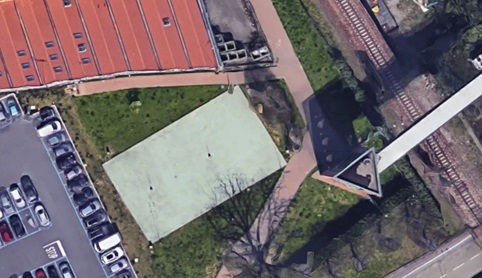The Emerge of New Towns Around the Big Cities (Case Study: Shiraz, Iran)
- Parisa Falakdin

- Nov 17, 2016
- 3 min read
Shiraz is the sixth most populous city in Iran and the capital of Fars Province. At the 2011 census, the population of the city was 1,460,665 and its build-up area with “Shahr-e Jadid-e Sadra” (Sadra New Town) was home to 150,064 habitants.
Shiraz is located in the southwest of Iran. It has a moderate climate and has been a regional trade center for over a thousand years. Shiraz is one of the oldest cities of ancient Persia.

Sadra and Golestan are two main New Towns located in Shiraz. Irregular and rapid expansion, congestion and population concentration in large cities, have been caused that cities have not been able to sustain a healthy urban life and in fact cannot provide necessary services for their residents. Considering these issues for distribution in major cities and balanced economic and social development and control of its irregularity, has been proposed creating new towns surrounding Shiraz to reduce its population and attractions, in the distance from major cities. Sadra New town with distance 15 kilometers in northwest of Shiraz, was created first new town in the urban area of Shiraz in order to rehabilitate the system and attracting overflow of population metropolis Posts Shiraz and reduce problems on the city.
Shiraz has been considered as a big city. It has an industrial town located in the east of the city which is one of the most industrial towns in Iran. Food industry, chemical industry, paper and wood, and metal industry are the most important industrial companies in the Shiraz industrial town. This industrial town has made a great deal of job opportunities and consequently the population growth.

The major objectives of these new towns after the revolution and as one of the strategies of urban development were to absorb the overflow population of large cities, to offer housing to low-income groups, to prevent population growth and anatomic enlargement of the cities, to decentralize population, and to accommodate the workers of industry sector. The following graph shows the main reasons for immigrating to Sadra-New-Town.

The administration of the New Towns are separated from Shiraz municipality, but it is still under the supervision of the main administration.
By the way, this new town still have many problems. The most important problems in this town is as follow:
1. Separation of the town from the network of cities and villages of the area
2. Lack of development
3. Social and cultural conflicts
4. Heavy maintenance costs
5. Dormitory nature of the town


Therefore, people who currently live in Sadra are not well satisfied about this new town and consequently Sadra is not a permanent home for most of them. A census has analyzed the relative satisfaction in Sadra New Town.

The following graph shows the tendency of families for choosing Sadra as a permanent settlement.

New researches show that problems in Sadra-New-Town are increasing and this is the main reason of people dissatisfaction. There are two comparison between Hashtgerd (as a successful new town located in Alborz Province) and Sadra-New-Town.
This graph shows people tendency of staying permanently in their new settlements.

And the following graph shows the percentage of families with problems related to their new settlements during the time in both cases.

Concluding, we argue that the welfare of migrants should be valued and people-oriented idea should be always the priority in urbanization process. Public service facilities and physical environment in suburban towns should be strengthened to attract more local people to live in new towns. The self-management system for migrants should be explored to avoid social conflicts and promote harmony. Considering the lasting decline of rural population, "smart shrinking" strategy should be implemented in some decaying villages.
Scenarios:
1. Developing an integrated perspective on urbanization
2. Coordinate strategies and promote partnerships
3. Develop long term perspective, creativity and culture
4. Create diverse and creative living and working environments
5. To strengthen opportunities and empower local jobs



Comments